Programme Paris
Samedi 4 novembre 2023
Aujourd'hui, la programmation se déroule au Jeu de Paume à 14h et 16h30, au Luminor Hôtel de Ville à 18h et 20h, et au CWB Paris à 14h, 16h, 18h et 20h. Cliquez sur l'onglet correspondant pour consulter le programme de chaque lieu.
+ Luminor Hôtel de Ville
Cinéma
Rétrospective
Jeu de Paume
1 place de la Concorde - Jardin des Tuileries - 75001 Paris
Métro: Concorde, lignes 1, 8 et 12, sortie n°1
Entrée libre tout public dans la limite des places disponibles
Accréditation professionnels et badge jeunes : accès gratuit prioritaire dans la limite des places disponibles
Les réservations ne sont pas obligatoires. Vous pouvez assister à une séance sans avoir réservé, dans la limite des places disponibles.
Rétrospective Yvonne Rainer (6/7)
Yvonne Rainer : Privilege - Fiction expérimentale | 16mm | couleur et n&b | 103:0 | USA | 1990

Yvonne Rainer
Privilege
Fiction expérimentale | 16mm | couleur et n&b | 103:0 | USA | 1990
“For Rainer, drama and style aren’t innocent, and the very concept of a story, and the way it’s told, is political”—Richard Brody. One of Rainer’s most narratively complex films, Privilege shifts from a documentary about women going through the process of menopause to a deadpan and delightfully anarchic autobiographical meta-film exploring the power dynamics underpinning experience, memory, and the manner in which women’s stories are told. Synopsis courtesy of The Metrograph.
When Yvonne Rainer made her first feature-length film in 1972, she had already influenced the world of dance and choreography for nearly a decade. From the beginning of her film career she inspired audiences to think about what they saw, interweaving the real and fictional, the personal and political, the concrete and abstract in imaginative, unpredictable ways. Her bold feminist sensibility and often controversial subject matter, leavened with a quirky humor, has made her, as the Village Voice dubbed her in 1986, "The most influential American avant-garde filmmaker of the past dozen years, with an impact as evident in London or Berlin as in New York. Rainer was born in San Francisco in 1934. She trained as a modern dancer in New York from 1957 and began to choreograph her own work in 1960. She was one of the founders of the Judson Dance Theater in 1962, the beginning of a movement that proved to be a vital force in modern dance in the following decades. Between 1962 and 1975 she presented her choreography throughout the United States and Europe, notably on Broadway in 1969, in Scandinavia, London, Germany, and Italy between 1964 and 1972, and at the Festival D'Automne in Paris in 1972. In 1968 she began to integrate short films into her live performances, and by 1975 she had made a complete transition to filmmaking. In 1972 she completed a first feature-length film, LIVES OF PERFORMERS. In all she has completed seven features: FILM ABOUT A WOMAN WHO... (1974), KRISTINA TALKING PICTURES (1976), JOURNEYS FROM BERLIN/1971 (1980, co-produced by the British Film Institute and winner of the Special Achievement Award from the Los Angeles Film Critics' Association), THE MAN WHO ENVIED WOMEN (1985), PRIVILEGE (1990, winner of the Filmmakers' Trophy at the Sundance Film Festival, Park City. Utah, 1991, and the Geyer Werke Prize at the International Documentary Film Festival in Munich, 1991), and MURDER and murder (1996). Rainer's films have been shown extensively in the U.S. and throughout the world, in alternative film exhibition showcases and revival houses (such as the Bleecker St Cinema, Roxy-S.F., NuArt-L.A, Film Forum-NYC, et al), in museums and in universities. Her films have also been screened at festivals in Los Angeles (Filmex), London, Montreux, Toronto, Edinburgh, Mannheim, Berlin, Locarno, Rotterdam, Creteil, Deauville, Toulon, Montreal, Hamburg, Salsa Majori, Figueira da Foz, Munich, Vienna, Athens (Ohio), Sundance, Hong Kong, Yamagata, and Sydney. A half-hour video tape entitled YVONNE RAINER: STORY OF A FILMMAKER WHO... was aired on Film and Video Review, WNET-TV in 1980. THE MAN WHO ENVIED WOMEN was aired on Independent Focus, WNET-TV in, 1989, and PRIVILEGE on the same program in 1992 and during the summer of 1994. In the Spring of 1997—to coincide with the release of MURDER and murder—complete retrospectives of the films of Yvonne Rainer were mounted at the Museum of Modern Art in San Francisco and at the Film Society of Lincoln Center in New York City. In 2006 MIT Press published Yvonne Rainer's memoir Feelings Are Facts: A Life

Collage vertigineux de fiction et d’autobiographie à la conception hybride, « Privilege » imagine le tournage d'un autre film, un documentaire sur la ménopause, réalisé par un personnage nommé Yvonne Washington, en dialogue avec sa vieille amie Jenny. Dans un flashback, celle-ci décrit une expérience lors de ses premières années à New York ; toutes deux commencent alors à démêler les nœuds du pouvoir sexué et racialisé, lié à ce souvenir.
Yvonne Rainer est considérée comme l'une des artistes les plus influentes du XXe siècle. Figure pionnière du mouvement de l'avant-garde, sa carrière artistique s’est déployée sur plus de cinq décennies, tant dans le domaine de la danse que dans celui du cinéma.
Utilisant archives, reconstitutions, photographies et techniques audiovisuelles non conventionnelles, ses films mobilisent la théorie critique et les analyses érudites, tout en explorant des thèmes profondément personnels, politiques et sociaux.
En 1972, alors qu’elle réalise son premier long métrage, Yvonne Rainer, membre fondatrice du Judson Dance Theater, est déjà reconnue comme étant l’une des chorégraphes majeures de sa génération ; ses contributions au cinéma se révéleront tout aussi radicales. Ses films ont ouvert de nouvelles possibilités pour le langage cinématographique, avec de nouveaux agencements de la narration et du mélodrame, une syntaxe audiovisuelle disjonctive, mais aussi grâce à un esprit pince-sans-rire et à l’acuité de sa conscience politique.
Rétrospective
Jeu de Paume
1 place de la Concorde - Jardin des Tuileries - 75001 Paris
Métro: Concorde, lignes 1, 8 et 12, sortie n°1
Entrée libre tout public dans la limite des places disponibles
Accréditation professionnels et badge jeunes : accès gratuit prioritaire dans la limite des places disponibles
Les réservations ne sont pas obligatoires. Vous pouvez assister à une séance sans avoir réservé, dans la limite des places disponibles.
Rétrospective Yvonne Rainer (7/7)
Yvonne Rainer : Murder And Murder - Fiction expérimentale | 16mm | couleur | 113:0 | USA | 1996
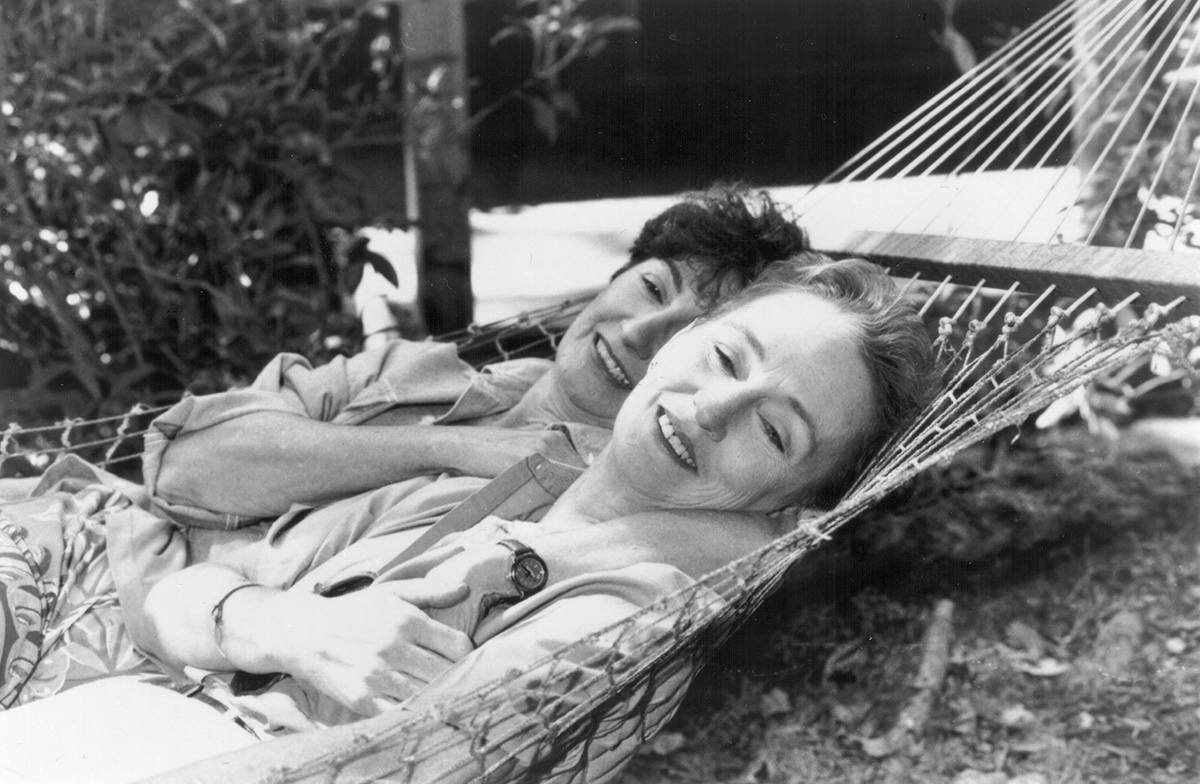
Yvonne Rainer
MURDER and murder
Fiction expérimentale | 16mm | couleur | 113:0 | USA | 1996
Rainer’s last feature is also one of her most personal, inspired by the lows and highs of a breast cancer diagnosis in the early 1990s, and the surprise of a burgeoning lesbian relationship. The latter is playfully refracted here through the love story of two women from very different backgrounds: Yvonne’s sixty-something screen counterpart Doris (Joanna Merlin) who gleefully announces that she “loves eating pussy,” and the younger academic she’s soon to move in with, Mildred (Kathleen Chalfant). A comic romance whose emotions are amplified by Rainer’s structural tomfoolery and signature intellectual rigor—with the director providing running commentary and appearing intermittently to address the camera—MURDER and murder probes the pleasures, and attendant questions, of late-in-life love affairs. (Synopsis courtesy of The Metrograph.)
When Yvonne Rainer made her first feature-length film in 1972, she had already influenced the world of dance and choreography for nearly a decade. From the beginning of her film career she inspired audiences to think about what they saw, interweaving the real and fictional, the personal and political, the concrete and abstract in imaginative, unpredictable ways. Her bold feminist sensibility and often controversial subject matter, leavened with a quirky humor, has made her, as the Village Voice dubbed her in 1986, "The most influential American avant-garde filmmaker of the past dozen years, with an impact as evident in London or Berlin as in New York. Rainer was born in San Francisco in 1934. She trained as a modern dancer in New York from 1957 and began to choreograph her own work in 1960. She was one of the founders of the Judson Dance Theater in 1962, the beginning of a movement that proved to be a vital force in modern dance in the following decades. Between 1962 and 1975 she presented her choreography throughout the United States and Europe, notably on Broadway in 1969, in Scandinavia, London, Germany, and Italy between 1964 and 1972, and at the Festival D'Automne in Paris in 1972. In 1968 she began to integrate short films into her live performances, and by 1975 she had made a complete transition to filmmaking. In 1972 she completed a first feature-length film, LIVES OF PERFORMERS. In all she has completed seven features: FILM ABOUT A WOMAN WHO... (1974), KRISTINA TALKING PICTURES (1976), JOURNEYS FROM BERLIN/1971 (1980, co-produced by the British Film Institute and winner of the Special Achievement Award from the Los Angeles Film Critics' Association), THE MAN WHO ENVIED WOMEN (1985), PRIVILEGE (1990, winner of the Filmmakers' Trophy at the Sundance Film Festival, Park City. Utah, 1991, and the Geyer Werke Prize at the International Documentary Film Festival in Munich, 1991), and MURDER and murder (1996). Rainer's films have been shown extensively in the U.S. and throughout the world, in alternative film exhibition showcases and revival houses (such as the Bleecker St Cinema, Roxy-S.F., NuArt-L.A, Film Forum-NYC, et al), in museums and in universities. Her films have also been screened at festivals in Los Angeles (Filmex), London, Montreux, Toronto, Edinburgh, Mannheim, Berlin, Locarno, Rotterdam, Creteil, Deauville, Toulon, Montreal, Hamburg, Salsa Majori, Figueira da Foz, Munich, Vienna, Athens (Ohio), Sundance, Hong Kong, Yamagata, and Sydney. A half-hour video tape entitled YVONNE RAINER: STORY OF A FILMMAKER WHO... was aired on Film and Video Review, WNET-TV in 1980. THE MAN WHO ENVIED WOMEN was aired on Independent Focus, WNET-TV in, 1989, and PRIVILEGE on the same program in 1992 and during the summer of 1994. In the Spring of 1997—to coincide with the release of MURDER and murder—complete retrospectives of the films of Yvonne Rainer were mounted at the Museum of Modern Art in San Francisco and at the Film Society of Lincoln Center in New York City. In 2006 MIT Press published Yvonne Rainer's memoir Feelings Are Facts: A Life.
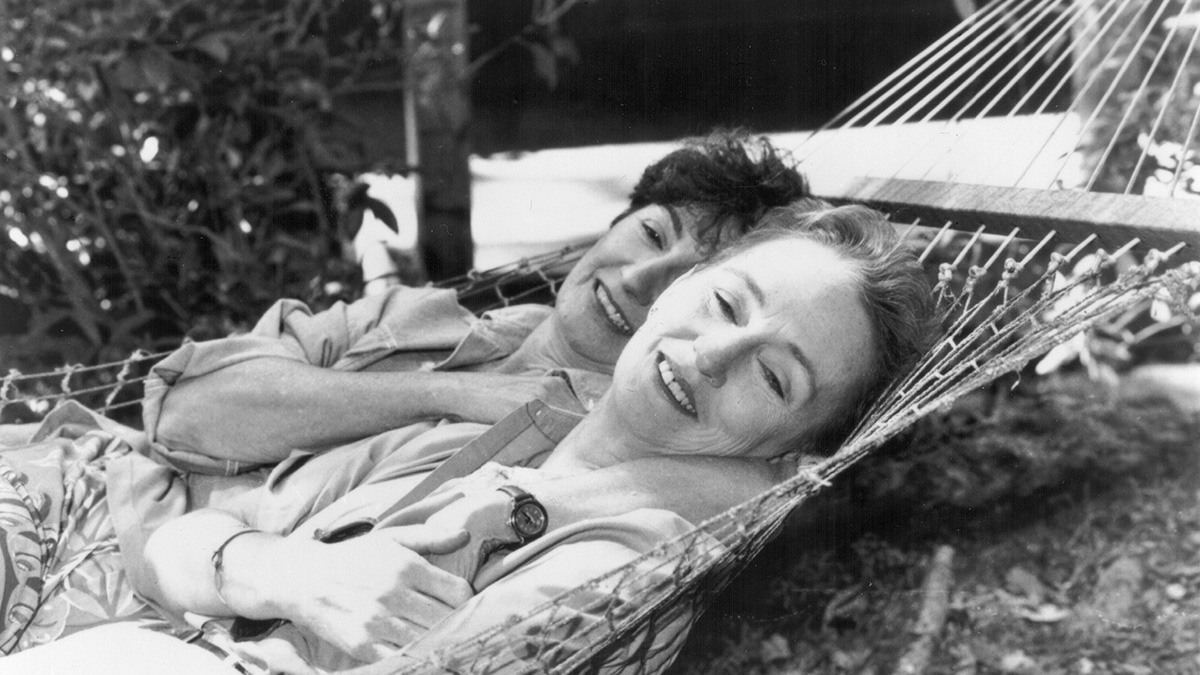
« MURDER and murder » explore les débuts de la relation amoureuse entre Doris, enseignante d’art dans la soixantaine, et Mildred, sa première petite amie, universitaire et cinquantenaire.
Deux personnages viennent commenter et hanter cette romance tardive : une Mildred adolescente, et la mère de Doris. Aussi, Yvonne Rainer, élégamment masculine en smoking, fournit ses propres commentaires en tant que réalisatrice et maîtresse de cérémonie. Le film, à la fois burlesque et sobre, propose une médiation sur l’amour et le vieillissement féminin, dans une culture où la jeunesse et les relations amoureuses hétérosexuelles sont glorifiées.
Yvonne Rainer est considérée comme l'une des artistes les plus influentes du XXe siècle. Figure pionnière du mouvement de l'avant-garde, sa carrière artistique s’est déployée sur plus de cinq décennies, tant dans le domaine de la danse que dans celui du cinéma.
Utilisant archives, reconstitutions, photographies et techniques audiovisuelles non conventionnelles, ses films mobilisent la théorie critique et les analyses érudites, tout en explorant des thèmes profondément personnels, politiques et sociaux.
En 1972, alors qu’elle réalise son premier long métrage, Yvonne Rainer, membre fondatrice du Judson Dance Theater, est déjà reconnue comme étant l’une des chorégraphes majeures de sa génération ; ses contributions au cinéma se révéleront tout aussi radicales. Ses films ont ouvert de nouvelles possibilités pour le langage cinématographique, avec de nouveaux agencements de la narration et du mélodrame, une syntaxe audiovisuelle disjonctive, mais aussi grâce à un esprit pince-sans-rire et à l’acuité de sa conscience politique.
Projection
Luminor Hôtel de Ville
20 rue du Temple - 75004 Paris
Métro: Hôtel de Ville, ligne 1 / Rambuteau, ligne 11
Tarif unique : 6 € / Ciné-cartes CIP, Cartes UGC Illimité et CinéPass
Accréditation professionnels et badge jeunes : accès gratuit prioritaire
"Uranium"
Kristina Norman : Thirst - Fiction expérimentale | 4k | couleur | 16:7 | Estonie | 2022

Kristina Norman
THIRST
Fiction expérimentale | 4k | couleur | 16:7 | Estonie | 2022
The film Thirst is a post-human choreography of machines and displaced plants. Millions of tons of Estonian peat end up in greenhouses in the Netherlands, where it is used as a soil substrate for tropical Phalaenopsis orchids. Meanwhile, local communities in Estonia are left with dry wells and a lack of drinking water as their fragile wetlands are drained for peat extraction. The orchids from the Netherlands then find their way back to supermarkets and homes in Estonia. It is a thirst for luxury and abundance that keeps the capitalist machinery running. Thirst is one episode from Kristina Norman’s Orchidelirium film trilogy. Commissioned for the Estonian Pavilion at the 59th International Art Exhibition – La Biennale di Venezia. Author and director: Kristina Norman Cinematographer: Erik Norkroos Composer: Märt-Matis Lill Choreographer and cast: Mari Mägi Produced by Rühm Pluss Null in collaboration with CCA Estonia
Kristina Norman (b.1979, lives and works in Tallinn) is an artist whose interdisciplinary work includes video installations, sculpture, and projects in the city space, as well as documentaries and performance. She is interested in the issues of collective memory, the memorial uses of the public space, but also the subtle sphere of the body politic that transgresses the boundaries between the public and the private. In 2009 she represented Estonia at the 53rd International Art Exhibition – La Biennale di Venezia, with a solo project; a multilayered mixed media installation entitled After-War. The project was a study of a conflict around the relocation of a Soviet monument in Tallinn. In 2022 at the 59th edition, the artist again represented Estonia with an ecocritical exhibition “Orchidelirium. An Appetite For Abundance”, a duo show with Bita Razavi, curated by Corina Apostol. Norman’s experimental film trilogy commissioned for the Estonian Pavilion, offers multiple ways to reflect on the legacies of colonialism from a specifically Eastern European perspective.
Emilija Skarnulyte : Kapinynas - Documentaire | hdv | couleur | 60:0 | Lituanie, Norvège | 2022

Emilija Skarnulyte
Kapinynas
Documentaire | hdv | couleur | 60:0 | Lituanie, Norvège | 2022
A python slithers and curls over the abandoned control room of Chernobyl’s sister, the Ignalina Nuclear Power Plant, its radioactive core an unleashed monster that will slither through time for a million years. From Etruscan ruins and sunken cities to the most modern of underground repositories, director Emilija Škarnulyt? follows our attempts to bury the immortal. Addressing the epochal effects of nuclear technology on all levels, Burial follows the cycle of power, an eternal return, another serpent eating its tail.
Emilija Škarnulyt? (b. Vilnius, Lithuania 1987) is an artist and filmmaker. Working between documentary and the imaginary, Škarnulyt? makes films and immersive installations exploring deep time and invisible structures, from the cosmic and geologic to the ecological and political. Winner of the 2019 Future Generation Art Prize, Škarnulyt? represented Lithuania at the XXII Triennale di Milano. Recent solo exhibitions include Tate Modern (2021), Kunsthaus Pasquart (2021), and the National Gallery in Vilnius (2021). Her films are in the IFA, Kadist Foundation and Centre Pompidou collections and have been screened at the Serpentine Gallery, The Museum of Modern Art, New York, and numerous film festivals. She is a founder and co-director of Polar Film Lab, and a member of artist duo New Mineral Collective.
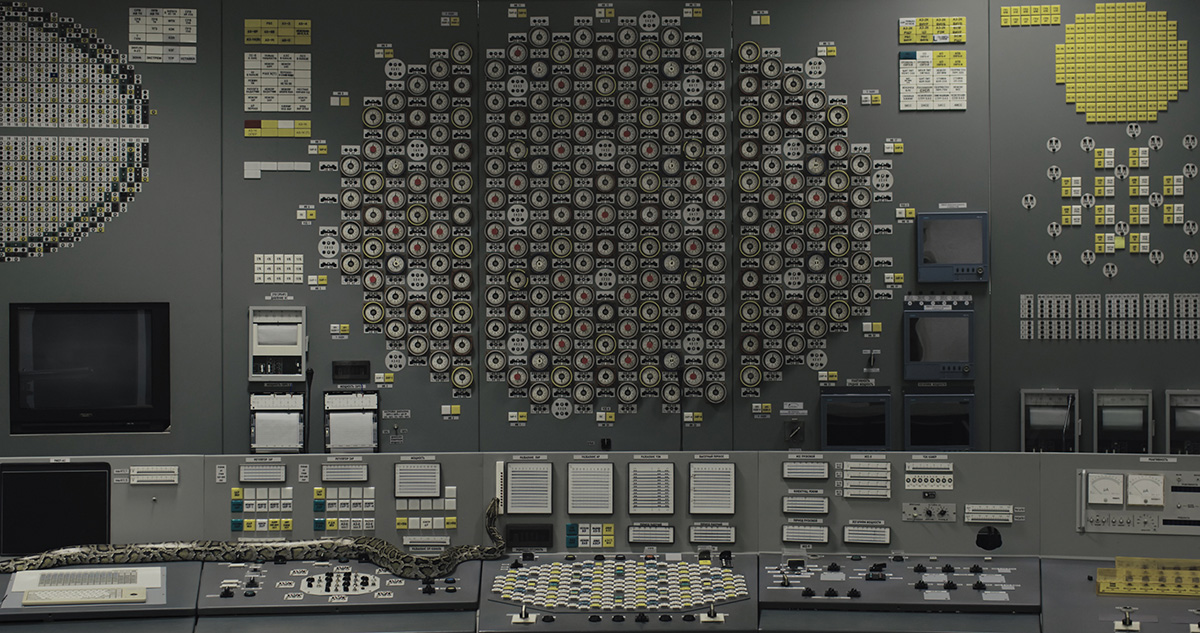
Kristina Norman documente la façon dont des millions de tonnes de tourbe prélevées en Estonie finissent comme substrat à la culture d’orchidées tropicales dans des serres aux Pays-Bas, orchidées qui seront envoyées dans le monde entier, y compris en Estonie. Interrogeant les effets de la technologie nucléaire, Emilija Škarnulytė scrute le cœur radioactif de la centrale nucléaire d'Ignalina, sœur de Tchernobyl, monstre déchaîné dont la radioactivité traversera le temps pendant un million d'années. Nous suivons les structures invisibles qui composent les grands systèmes de pouvoir et les tentatives humaines de recouvrir et enfouir ce qui perdure et ne disparait pas, des ruines étrusques et des villes englouties, jusqu’aux dépôts souterrains les plus modernes. Le cycle du pouvoir est comme un éternel retour, ou un serpent qui se mord la queue.
Projection
Luminor Hôtel de Ville
20 rue du Temple - 75004 Paris
Métro: Hôtel de Ville, ligne 1 / Rambuteau, ligne 11
Tarif unique : 6 € / Ciné-cartes CIP, Cartes UGC Illimité et CinéPass
Accréditation professionnels et badge jeunes : accès gratuit prioritaire
"Images transmises"
Nadia Ghanem : Three Disappearances And A Song - Film expérimental | 4k | couleur | 27:6 | Egypte | 2021

Nadia Ghanem
Three Disappearances and a Song
Film expérimental | 4k | couleur | 27:6 | Egypte | 2021
As my grandfather's presence in the country becomes increasingly problematic, my mother gradually decides to never touch a camera again, my father becomes obsessively convinced of his own disappearance, and something almost miraculous happens in 1976 in Montreux: Nina Simone comes back from retirement. In Three Disappearances and a Song, I revisit the family archive, pick up my camera, and film 3 people struggling to find new ways to be: my mother, my father, and myself.
Nadia Ghanem is a filmmaker who lives and works in Cairo. She recently finished her first short film as a director Three Disappearances And A Song (2021) which premiered at the 43rd edition of the Cairo International Film Festival, Images Festival, Cinema Árabe Feminino in Brazil and received the best short film award at Gabes Cinema Fen (Tunisia) as well as the audience and Jury awards for best short film at Manassat Film Festival in Cairo. Nadia is currently working on her first feature Looking for Spiderman which received development awards from A Kiss in the Desert, Rawiyat film collective, Two Stories Production, Dox Box and is part of the Studio Seen program. In parallel to being a filmmaker, Nadia Ghanem curated film programs for the 24th edition of the Videoex festival in Basel and since 2022 is a programmer for the Panorama of the European Film organized by Zawya Arthouse Cinema in Cairo. She also works as a Program Manager at Medrar for Contemporary Art where she coordinated the 10th edition of the Cairo Video Festival.
Bradly Dever Treadaway : Beatings Of The Devil - Vidéo expérimentale | mov | couleur | 7:19 | USA | 2022
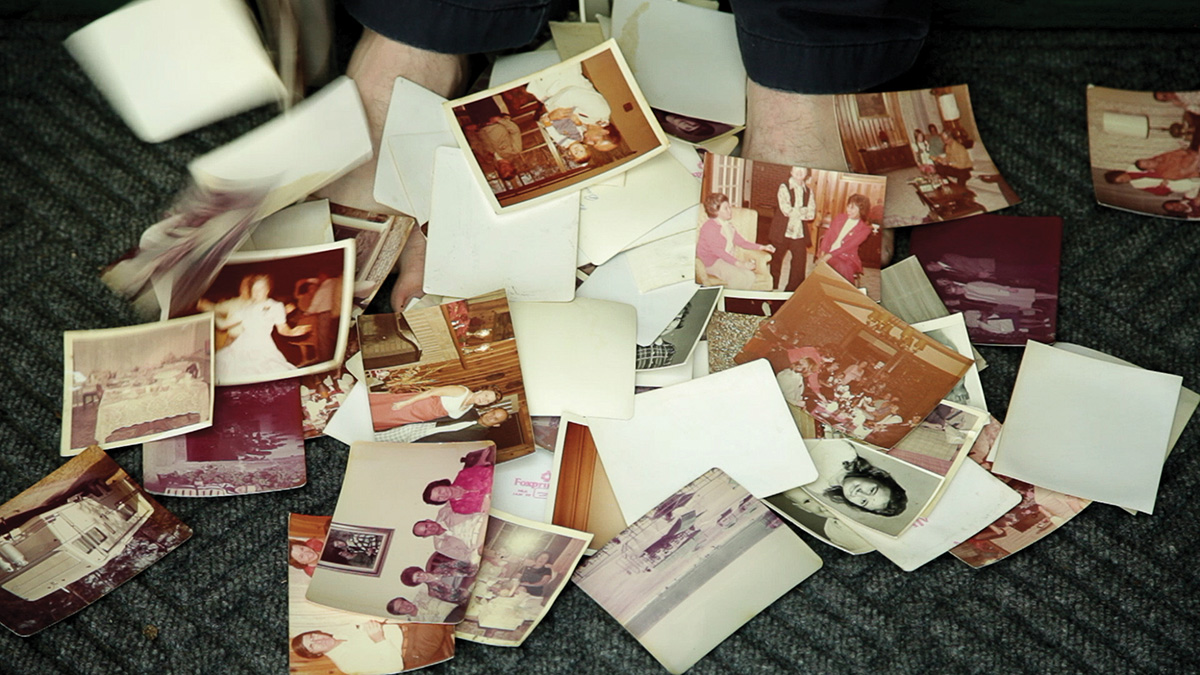
Bradly Dever Treadaway
Beatings of the Devil
Vidéo expérimentale | mov | couleur | 7:19 | USA | 2022
"Beatings Of The Devil" is based on the concept and weather event called sunshowers, or, as my grandmother would often say when it rained while the sun was shining, “The devil is beating his wife”. This wildly inappropriate, and outdated colloquial phrase, which resonated deeply within me as a child, provides a point of departure and interpretation for this work. Created through a series of shoots spanning over four years, the piece has evolved into a memorial to my mother, and a reckoning for my father, who recently lost his wife of 51 years. The piece premiered at the 2022 Art of Brooklyn Film Festival, and won the Vanguard Award for Best Experimental Short.
Bradly Dever Treadaway is a Brooklyn based artist, educator and curator utilizing lens-based image making, moving images, sound, sculpture, installation and performance to comment on the breakdown of intergenerational communication and broken familial links due to natural disaster, technological evolution, mental health challenges, societal shifts and the continuance of interpersonal detachment occurring within American communities. His work is visualized through archival interventions, recontextualizing the archive to serve as form, medium, subject matter and concept, elevating domestic ephemera and rituals while questioning material significance within the photographic medium. Treadaway creates memorials, monuments and mnemonic devices to illustrate ancestral collisions with contemporary responses. His work has been exhibited at the Whitney Museum of Art, the Center for Photography at Woodstock, The International Center of Photography,The Ogden Museum of Southern Art in New Orleans, Agora Gallery in Chelsea, NY, The Mobile Museum of Art, The Ospedale degli Innocenti in Florence, Italy, and the Lishui Museum of Photography in China. His film/video work has been screened at the New Orleans Film Festival, the Carnegie Museum of Art, the National Centre for Contemporary Art in Moscow, Russia, Union Docs, Anthology Film Archives, the Art of Brooklyn Film Festival, the Nashville Film Festival, the Coney Island Film Festival, and at the Brooklyn Arts Council’s Scene: Brooklyn. Treadaway’s work has been curated by Vince Aletti, Kevin Jerome Everson, Jon Feinstein and Julian Cox and is part of the permanent collections at The Center for Photography at Woodstock, The Ogden Museum of Southern Art, The Masur Museum of Art, the Ewing Gallery at the University of Tennessee, the Brooklyn Public Library and the Mobile Museum of Art. Treadaway has recently held residencies at Trestle Art Space and BRIC Media Arts in Brooklyn, Kutztown University in Pennsylvania and the Contemporary Arts Center at Woodside in NY.
Ana Vaz : A árvore - Doc. expérimental | 16mm | couleur | 20:32 | Brésil | 2022

Ana Vaz
A árvore
Doc. expérimental | 16mm | couleur | 20:32 | Brésil | 2022
Emerging from a regular and spontaneous practice of film, A Árvore is an encounter with and an homage to the filmmaker’s father Guilherme Vaz (1948-2018). Major Brazilian artist, composer, experimental musician and maestro, as well as one of the pioneers of conceptual and sound art in Brazil, his compositions often traverse the filmography of Ana Vaz in a constant dialogue between music, sound and place. Guilherme Vaz’s work is marked by his experience living at the recently inaugurated Brasília, where Ana was born, as well as the many years spent collaborating with remote indigenous communities in the Brazilian Amazon. A Árvore is a ghostly ritual woven through the fragments of a recorded conversation between father and daughter transposed to various significant geographies in life lines of both.
Ana Vaz (1986, Brazil) is an artist and filmmaker who works with cinema as an instrument. Her films, or rather her film-poems, travel through territories and events haunted by the perennial consequences of internal and external forms of colonialism, and their footprints on the earth as well as on human and different from human forms. Her practice can also take the shape of writing, critical pedagogy, installations, film programs or ephemeral events, which are expansions or developments of her films. Her works have been presented at film festivals, seminars and institutions such as Locarno Film Festival – Cineasti del presente; Berlinale Forum Expanded; IFFR, Rotterdam; Viennale; Palais de Tokyo, Paris; Pivô, São Paulo; Jeu de Paume, Paris; CPH:Dox; New York Film Festival – Projections; TIFF Wavelengths, Toronto; BFI, London; Cinéma du Réel, Paris; Tate Modern, London; LUX Moving Images, London; Tabakalera, San Sebastián; Whitechapel Gallery, London; MAM Museum of Modern Art, São Paulo; Matadero, Madrid; Jameel Arts Center, Dubai; Mostra de Cinema de São Paulo; Savvy Contemporary, Berlin; among others. She is a recipient of the Sundance Film Institute Nonfiction Grant (2019), the Film Society of Lincoln Center Kazuko Trust Award (2015), as well as grand prizes at Festival dei Popoli (2022), Entrevues Belfort (2022), FIDOCS (2022), Punto de Vista (2020), 25FPS (2020), Cinéma du Réel (2016), Media City Film Festival (2015), Fronteira Experimental and Documentary Film Festival (2015). Ana Vaz is also a founding member of the COYOTE collective, an interdisciplinary group working between ecology and political science through conceptual and experimental formats.
Teboho Joscha Edkins : Ghost - Doc. expérimental | 4k | couleur | 8:41 | Afrique du sud | 2023

Teboho Joscha Edkins
Ghost
Doc. expérimental | 4k | couleur | 8:41 | Afrique du sud | 2023
Ghosts is a short documentary film, in which ghosts, both real and imagined, haunt the lives of a rural community, in their small town in post-apartheid South Africa.
Teboho Edkins (*1980 in Tennessee, USA) grew up in Southern Africa and lives and works in Cape Town and Berlin. He studied photography and fine art at the Michaelis School of Fine Art, University of Cape Town, South Africa and film at Le Fresnoy Studio National des Arts Contemporains in Tourcoing, France. This was followed by a degree in directing at the Deutsche Film und Fernseh-akademie in Berlin (dffb). Teboho Edkins’s films have shown at many festivals, group and solo exhibitions, including at the Centre Pompidou, Paris; Tate Modern, London; South London Gallery; Haus der Kulturen der Welt, Berlin; Museum für Moderne Kunst, Frankfurt; Berlinische Galerie, Berlin; Weserburg-Museum für Moderne Kunst, Bremen; Museum of Modern Art, New York City. Some of the over 500 film festivals his films have screened at include the International Film Festival Berlin (Berlinale); International Short Film Festival, Oberhausen; and International Film Festival (IFFR), Rotterdam. His films have also been acquired by several public and private art collections including the Goetz Collection in Munich, von Kelternborn Collection in Frankfurt and the Collection KAI 10 | Arthena Foundation in Düsseldorf.
Silvia Maglioni, Graeme Thomson : Late Gestures - Vidéo expérimentale | hdv | couleur et n&b | 24:0 | Italie, France | 2022

Silvia Maglioni, Graeme Thomson
Late Gestures
Vidéo expérimentale | hdv | couleur et n&b | 24:0 | Italie, France | 2022
In his famous text titled "On Late Style: Music and Literature Against the Grain", Palestinian writer Edward Saïd explores how the late style of certain composers, writers and artists constitutes a space of creative freedom unmoored from the conventions of their epoch that opens onto new horizons of artistic expression. Inspired by these thoughts, “Late Gestures” is a journey through scenes taken from the later, often neglected films of a number of great filmmakers that in their prophetic untimeliness look towards new possibilities for cinema and the moving image. Silvia Maglioni and Graeme Thomson invite us to explore the hauntology of images through a shape-shifting montage of these “late cinematographic gestures”.
Silvia Maglioni & Graeme Thomson are filmmakers and artists whose works explore the porous borders between fiction and documentary, the visible and the invisible, cinema and installation, theory and practice. Their production includes the creation of films (both features and shorts), mixed-media installations, sound works, performances, radio shows, vernacular technologies and books. The artists often make use of cinema to reactivate lost, forgotten, silenced or neglected archives and histories and to create new modes of collective vision and engagement with contemporary thought and politics. In constant dialogue with literature, philosophy, music, science and the history of cinema their projects are research-based, process-oriented and trans-disciplinary. Their work has been presented at film festivals, in museums and independent art spaces worldwide.
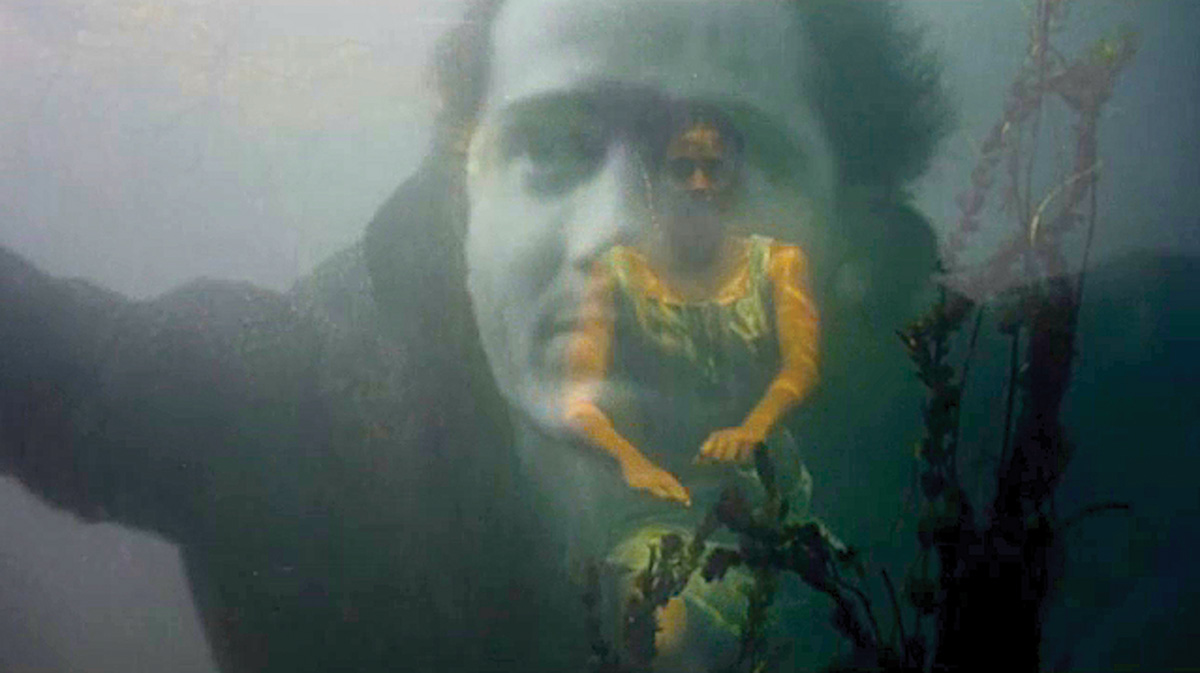
Nadia Ghanem revisite les archives familiales et filme trois personnes qui luttent pour trouver une nouvelle façon d'être : sa mère, son père et elle-même. En 1976, alors que son père est convaincu de sa propre disparition, Nina Simone sort de son silence pour un concert à Montreux. Bradley Dever a filmé sa maison natale pendant quatre ans, l’idée d’averse en plein soleil traverse le film, qui devient un hommage à sa mère. Comme un rituel fantomatique réalisé à partir de fragment d'une conversation entre un père et sa fille, Ana Vaz réalise un hommage à son père, Guilherme Vaz, artiste brésilien, compositeur et musicien expérimental, pionnier au Brésil de l'art conceptuel et sonore. Toboho Edkins filme la communauté rurale post-apartheid dans une petite ville d'Afrique du Sud, où des fantômes, réels ou imaginaires, hantent les vivants. Silvia Maglioni et Graeme Thomson voyagent à travers les scènes extraites de films tardifs de grands cinéastes. Ces « gestes cinématographiques tardifs », souvent peu connus, présentent une atemporalité ouvrant de nouvelles possibilités.
Projection
Centre Wallonie Bruxelles | Cinéma
Entrée par le 46, rue Quincampoix - 75004 Paris
Métro: Rambuteau, ligne 11 / Les Halles, ligne 4 / Châtelet, lignes 1, 4, 7, 11 et 14
Entrée libre tout public dans la limite des places disponibles
Accréditation professionnels et badge jeunes : accès gratuit prioritaire dans la limite des places disponibles
"Caméra objective"
Juan Desteract : Souviens-toi - Vidéo expérimentale | mov | noir et blanc | 1:31 | France, Argentine | 2022

Juan Desteract
Souviens-toi
Vidéo expérimentale | mov | noir et blanc | 1:31 | France, Argentine | 2022
La persistance d’une image fatidique et le besoin de s'y accrocher impliquent le dédoublement d’un souvenir. Ce dernier se trouve ainsi suspendu entre les multiples versions d’un même évènement, entre les représentations d’un passé et un présent déjà vécu, entre figuration et abstraction, entre mouvement et immobilité, entre film et photographie. Des impressions intrusives d'autres vies se superposent au souvenir, nous exposant ainsi à une réalité surveillée où nous nous demandons qui voit et que voir.
Juan Desteract est né à Saint-Germain-en-Laye (France) en 1997. Il vit actuellement à Buenos Aires, en Argentine. Il a étudié le design graphique à l’Université de Buenos Aires. Il a poursuivi sa formation en photographie et arts visuels au cours de divers séminaires, ateliers et résidences artistiques à Buenos Aires. Parallèlement, il s'est formé en écriture, composition musicale puis en improvisation musicale. A partir de 2021, il participe à des expositions collectives dans des espaces artistiques et des musées d'art contemporain en Argentine, au Chili, Uruguay, Espagne et en France. Son travail associe des disciplines diverses telles que la post-photographie, l'audiovisuel expérimental, le design graphique et l'improvisation musicale, en se focalisant sur certains traits distinctifs du cinéma structurel et du réemploi d’archives. Depuis 2020, Juan travaille dans le domaine du design graphique en tant que Professeur à l’Université de Buenos Aires et en tant que graphiste au Musée d'art moderne de Buenos Aires.
Bill Morrison : Incident - Doc. expérimental | 0 | couleur | 29:49 | USA | 2023

Bill Morrison
Incident
Doc. expérimental | 0 | couleur | 29:49 | USA | 2023
INCIDENT reconstructs a police shooting in Chicago in 2018, reassembling the event and its immediate aftermath from a variety of viewpoints, including surveillance, security, dashboard, and body-worn cameras as a continuous, synchronized split-screen montage.
Bill Morrison has been called “the poet laureate of lost films” (New York Times, 9/22/21). He makes films that reframe long-forgotten moving images. He has premiered feature-length documentary films at the New York, Sundance, Telluride and Venice film festivals. Morrison had a mid-career retrospective at MoMA in 2014. His found footage opus Decasia (2002) was the first film of the 21st century to be selected to the Library of Congress’ National Film Registry. Dawson City: Frozen Time (2016) was named one of the best films of year by more than 100 critics, and among the best of the decade (2010s) by the Associated Press, Los Angeles Times, and Vanity Fair, among others. In 2021 Morrison became a member of the documentary branch of the Academy of Motion Pictures Arts and Sciences.
Sirine Fattouh, Sandra Fatté, Victor Bresse, Chrystel Élias : Behind The Shield - Vidéo | 0 | couleur | 57:42 | Liban | 2022
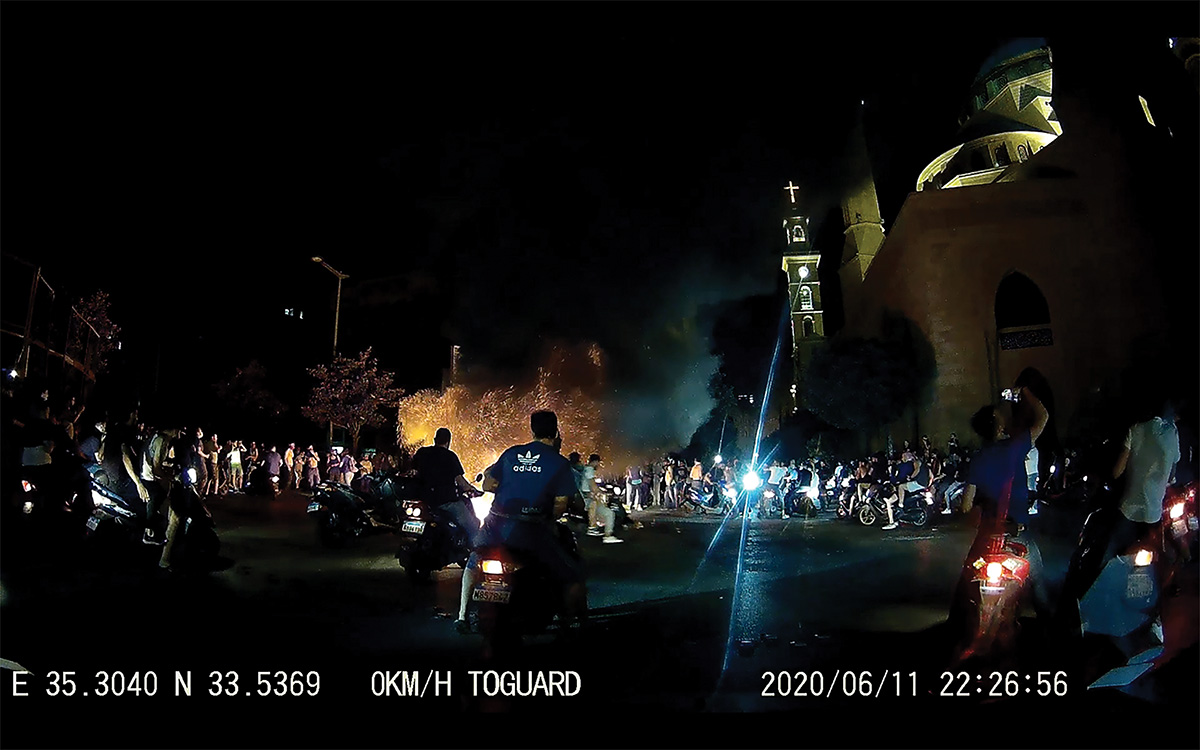
Sirine Fattouh, Sandra Fatté, Victor Bresse, Chrystel Élias
Behind the Shield
Vidéo | 0 | couleur | 57:42 | Liban | 2022
Filmée au Liban par une Dash Cam entre le 18 octobre 2019, date à laquelle ont débuté des soulèvements populaires, et l’après-explosion du 4 août 2020, les images rendent compte des bouleversements politiques, sociaux et économiques que traversait le Liban durant cette période. Dans la première moitié du film, on assiste à l’engouement général des Libanais au début des manifestations de 2019. Mais au fil des mois, on assiste à l’exacerbation des tensions entre les manifestants et les forces de l’ordre. Avec les différentes étapes du confinement de la crise sanitaire de 2019-2020, les manifestations vont cesser et les rues se vider. La deuxième partie est essentiellement centrée sur le soir de l’explosion du 4 août 2020 où l’on découvre les dégâts, le chaos et la stupéfaction des habitants dans les rues de Beyrouth.
Artiste, chercheure et enseignante à l’École Supérieure d’Art d’Avignon, Sirine Fattouh est née en 1980 à Beyrouth. Les déplacements constants dus aux guerres et aux conditions socio politique ont forgés chez elle un sentiment d’exil intérieur qui l’amènent à explorer son environnement dans toute sa complexité et à y faire émerger des histoires d’individus dont la parole est marginalisé. Fattouh s’intéresse aux histoires non officielles celles qui sont considérées comme anecdotiques. Elle puise son inspiration dans son passé et son présent afin d’explorer la relation complexe qu’elle entretient avec son pays d’origine et les conséquences des conflits et des guerres sur la vie quotidienne des gens. Sirine Fattouh a fait ses études à Paris 1 Panthéon Sorbonne où elle a obtenu en 2015 une thèse en Arts plastiques et Sciences de l’art. Entre 2004 et 2006, elle a étudié à l’école nationale supérieure d’arts de Paris Cergy et a obtenu son DNSEP. Entre 2005 et 2021, elle enseigne les arts plastiques et l’histoire de l’art dans plusieurs universités en France et au Liban. En 2010 elle travaille pendant une année au centre Pompidou à Paris en tant qu’attachée de conservation pour le programme art et mondialisation auprès de Catherine Grenier. Ses œuvres ont été exposées dans de nombreuses galeries et institutions artistiques dont le Centre d’Art Pasquart à Bienne, le MAXXI à Rome, la fondation Ricard à Paris, le Centre Pompidou à Metz, le Mucem à Marseille, le Beirut Art Center, Kaaï Studio à Bruxelles, ZKM à Karlsruhe, Brick Lane à Londres, la Villa Savoye du Corbusier à Poissy, l’Institut du monde arabe à Paris et la Biennale de Thessalonique en Grèce.

Juan Desteract interroge le dédoublement du souvenir face à la persistance de l’image. A partir d’une pluralité de sources d’images enregistrées – caméra de surveillances, caméras embarquées, caméras piéton –, Bill Morrison réassemble les images d’une fusillade policière – un jeune homme noir tué par un policier – survenu à Chicago en 2018. Au Liban, Sirine Fattouh reprend les images filmées par une Dash Cam installée dans sa voiture, entre le 18 octobre 2019 – date à laquelle ont débuté des soulèvements populaires –, le 4 août 2020 et les jours qui ont suivi l’explosion. Les images rendent compte des bouleversements politiques, économiques et sociaux que traverse le Liban.
Projection
Centre Wallonie Bruxelles | Cinéma
Entrée par le 46, rue Quincampoix - 75004 Paris
Métro: Rambuteau, ligne 11 / Les Halles, ligne 4 / Châtelet, lignes 1, 4, 7, 11 et 14
Entrée libre tout public dans la limite des places disponibles
Accréditation professionnels et badge jeunes : accès gratuit prioritaire dans la limite des places disponibles
"Les témoins"
Miryam Charles : Tous Les Jours De Mai - Doc. expérimental | 16mm | couleur | 6:44 | Canada | 2023

Miryam Charles
Tous les jours de Mai
Doc. expérimental | 16mm | couleur | 6:44 | Canada | 2023
Suite au tournage d'un documentaire sur la mort de sa fille, une mère réfléchi à sa propre vie et surtout au temps qui passe.
Miryam Charles est une réalisatrice, productrice et directrice de la photographie d’origine haïtienne vivant à Montréal. Elle a produit plusieurs courts et longs métrages de fiction. Ses films ont été présentés dans divers festivals au Québec et à l’international. Son premier long métrage Cette maison a été présenté à la Berlinale, au AFI film festival en plus de faire partie du TIFF Top 10 en 2022. Elle a également lancé le court-métrage Au crépuscule au festival de Locarno. En tant que productrice, elle travaille présentement à la post-production de la série Après le déluge.
Marina Stanimirovic : Des Carcasses De Tout - Doc. expérimental | mov | couleur | 4:15 | France, Allemagne | 2022

Marina Stanimirovic
Des carcasses de tout
Doc. expérimental | mov | couleur | 4:15 | France, Allemagne | 2022
Enregistré en France et en Allemagne, "CARCASSES OF ALL KINDS" est un enregistrement sauvage d'une discussion avec ma mère avant qu'il ne soit trop tard. Ma mère, malade, me racontait notre premier retour en Bosnie-Herzégovine, l'année qui a suivi la fin de la guerre. Mais cette pièce ne traite pas tant de la guerre que de fragilité, de mémoires, cicatrices et de départs. Voix et mots utilisé comme matériel sculptural, découpés, montés et mélangés à d'autres sons enregistrés. Ceux ci proviennent d’enregistrements réalisés dans le service de cancérologie du centre hospitalier d'Argenteuil, de frottement de vêtements, de découpe de verre et de métal, de martelage, d’une imprimante industrielle et de chants. Chaque été, ma mère avait l'habitude de couper de la lavande dans son jardin et de la placer dans des bas usagés. En triant ses vêtrements après sa mort, je les ai tous rassemblé un même sac. La vidéo est une plongée dans ce sac.
Marina Stanimirovic (1988, Argenteuil) est une artiste plasticienne française basée à Berlin. Elle a étudié le bijou contemporain à l'Ecole Boulle, à Paris (2007 - 2011), à lyon, et à Londres, où elle a obtenu un Master au Royal College of Arts(2011 - 2013). De la violence contre les femmes aux disparités sociales ou aux systèmes économiques dysfonctionnels, elle observe le laid, le beau, le triste, l'absurde et le traduit à travers des sculptures et installations comprenant la photographie, vidéos et expérimentations sonores. En 2022, elle crée DERIVAT, une plateforme qui invite à réfléchir sur le marché de l'art contemporain. Depuis 2023, elle fait partie du project space Gr_und à Wedding Berlin.
Daryna Mamaisur : I Stumble Every Time I Hear From Kyiv - Documentaire | mov | couleur | 17:17 | Ukraine | 2022

Daryna Mamaisur
I Stumble Every Time I Hear From Kyiv
Documentaire | mov | couleur | 17:17 | Ukraine | 2022
“I have no words to say” is the phrase one can often hear when the reality of the war is so striking that language seems to be incapable to describe it. While studying in Brussels, Daryna Mamaisur is caught up in the russian full-scale invasion of her country. In the springtime, when chestnut trees are blooming at the same time in Brussels and Kyiv, she makes a film capturing that spring in the distance. Keeping a visual correspondence with a friend from Kyiv, she faces the question: while making a film about war, how to speak about the wound that is fresh and ongoing?
Daryna Mamaisur is a visual artist and filmmaker, born in Kyiv, Ukraine. Having a background in art theory and philosophy, she developed her practice at the intersection of different disciplines. Her works were related to transformations of public space, and landscape due to their connection to visual culture and memory. Besides, she is particularly interested in situations when language and vocal expression appear fragile and incapable of seizing reality. In 2022, she graduated from the DocNomads, a joint master’s program in documentary filmmaking, based in Lisbon, Budapest and Brussels. Her films participated in the film festivals as Kassel Dokfest, Visions du Réel, FIDMarseille, Docudays UA etc.
Ewan Macbeth : Prison With Songbirds - Doc. expérimental | 35mm | couleur | 12:30 | Pays-Bas | 2022
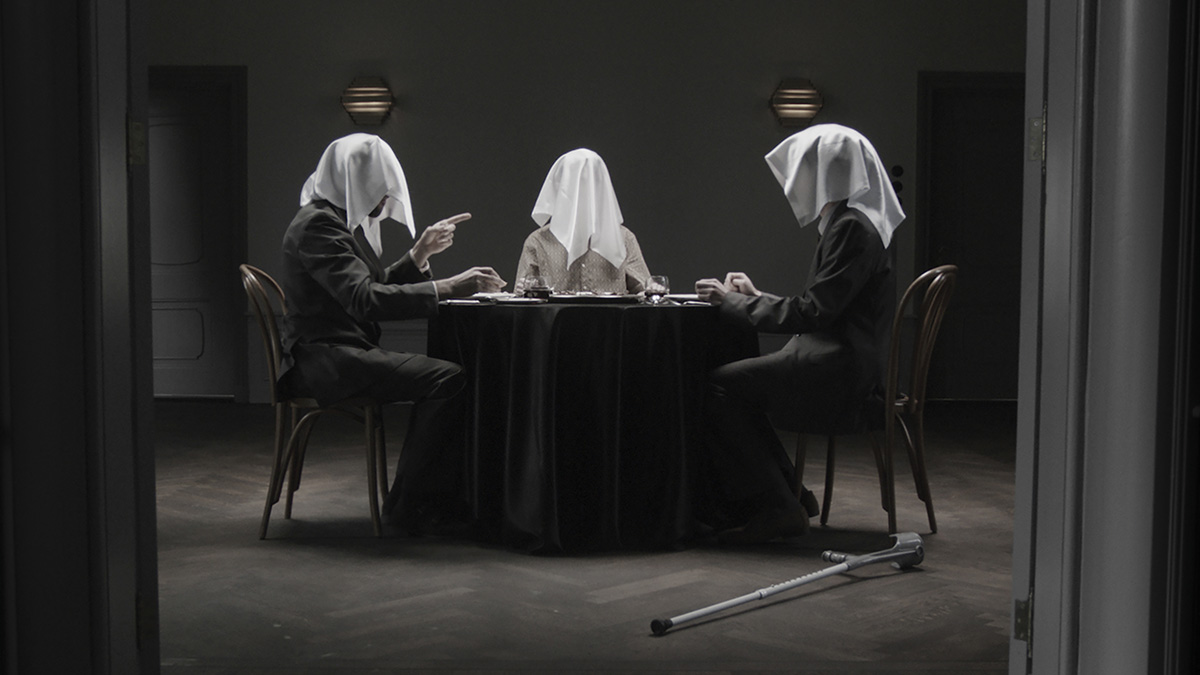
Ewan Macbeth
Prison with Songbirds
Doc. expérimental | 35mm | couleur | 12:30 | Pays-Bas | 2022
An unseen narrator tells his experience of wrongful imprisonment in an unnamed country and his random release. Based on a letter sent to Amnesty International, by the filmmaker’s father, and a surreal interview given about it. ‘Prison with Songbirds’ is a documentary and fiction hybrid in which dream-nightmare and digital-celluloid collide.
Ewan Macbeth (born 1992, UK) is a Scottish artist filmmaker based in Rotterdam. After studying Fine Art Photography at Glasgow School of Art he did an MA in Lens-Based Media at The Piet Zwart Institute. His work has been seen in International Film Festival Rotterdam, Ji.hlava International Documentary Film Festival, EYE Filmmusuem Amsterdam, EMAF Osnabrück, CCA Glasgow, RSA Edinburgh; amongst others. He is currently a member of Time Window collective and developing his first feature film.
Kim Mooyoung : Hwang Ryong San - Doc. expérimental | mov | couleur | 18:35 | Coree du Sud | 2021
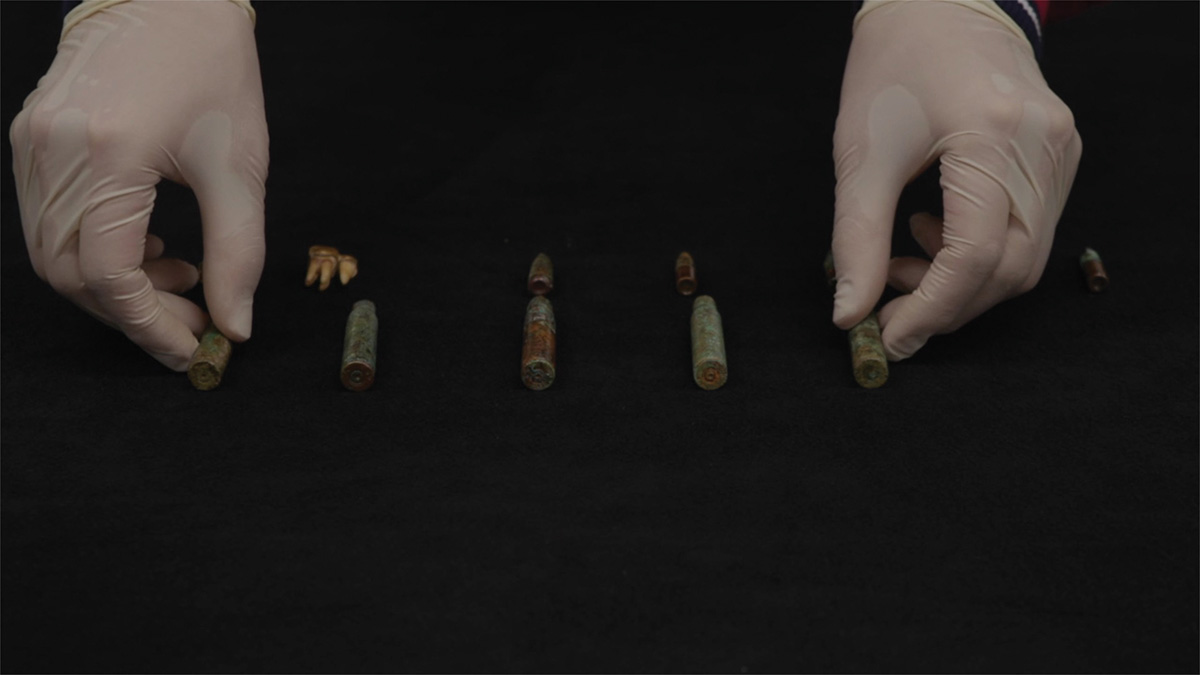
Kim Mooyoung
Hwang Ryong San
Doc. expérimental | mov | couleur | 18:35 | Coree du Sud | 2021
The film depicts the massacre of civilians in Geum-jeong-gul Cave in Gyeonggi-do in October 1950. This massacre, in which more than 153 people were killed in a village by South Korean military and police, was compensated by South Korean government in 1993 when it became known to the world through the efforts of the victims' bereaved families, but there is still no place for their remains in their home town.
As well as making movies, Kim Mooyoung also creates research-based media art, which is being exhibited in several countries. After four short films, SLOW DAY (2010), CONCRETE (2012), LAND WITHOUT PEOPLE (2016), and DAY AND NIGHT(2017), he directed his first feature film, NIGHT LIGHT (2018), which was invited to Busan International Film Festival 2018 and Seoul Independent Film Festival 2018.
Eliane Esther Bots : In Flow Of Words - Documentaire | dcp | couleur | 22:15 | Pays-Bas | 2021
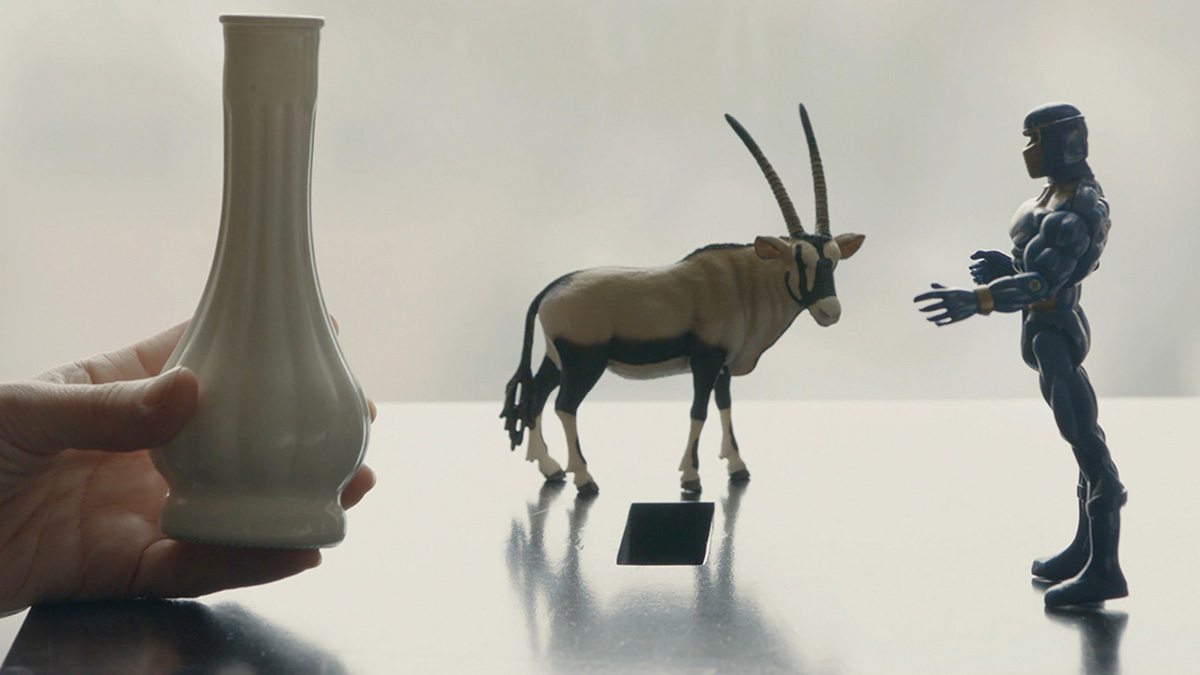
Eliane Esther Bots
In Flow of Words
Documentaire | dcp | couleur | 22:15 | Pays-Bas | 2021
In Flow of Words follows the narratives of three interpreters of the International Criminal Tribunal for the former Yugoslavia. They interpreted shocking testimonies from witnesses, victims and perpetrators, without ever allowing their own emotions, feelings and personal histories to be present. Contrary to their position at the tribunal, this film places their voices and experiences center stage.
Eliane Esther Bots (1986, The Netherlands) graduated cum laude from the Master of Film at the Netherlands Film Academy in Amsterdam. Her films have been screened at ‘IDFA’ (NL) ‘Berlinale’, Berlin (DE), ‘Cinema du Reel’, Paris (FR), ‘New York Film Festival’ (USA), ‘International short film festival Oberhausen’ (DE), ‘Go Short’, Nijmegen (NL), Kassel Dokfest (DE). She works as a lecturer ‘Moving image’ at the University of the Arts in Utrecht (NL).

Myriam Charles filme une mère qui réfléchit à sa propre vie et au temps qui passe, après le tournage d'un documentaire sur la mort de sa fille. Marina Stanimirovic enregistre une conversation qu’elle a eues avec sa mère, malade, lui racontant leur premier retour en Bosnie-Herzégovine, l'année qui a suivi la fin de la guerre. Les voix et les mots sont utilisés comme matériel sculptural, découpés, montés et mélangés à d'autres sons enregistrés, provenant du service de cancérologie du centre hospitalier d'Argenteuil. Alors étudiante en cinéma à Bruxelles, Daryna Mamaisur a entretenu une correspondance visuelle avec un ami à Kiev, lors de l’invasion russe de l’Ukraine. Les journaux télévisés diffusent les atrocités de la guerre, et le cinéma semble être la chose la moins appropriée face au danger ultime que courent ses proches. Mais les arbres fleurissent en même temps dans les deux villes, et le film tente de capturer ce printemps au loin. Au départ d’un rapport écrit par son père à Amnesty International, détaillant les tortures subies en prison et sa libération arbitraire, Ewan Macbeth suit le récit d’une même expérience d'emprisonnement injustifié, dans un pays qui n’est pas nommé, dans un monde kafkaïen de bureaucratie cauchemardesque et d'État sans visage. Kim Mooyoung parle du massacre de civils dans la grotte de Geum Geumjeong en octobre 1950, dans lequel 153 personnes ont été tuées par la milice et la police sud-coréennes. Le film interroge la façon dont les souvenirs survivent dans le présent de la société sud-coréenne. Eliane Esther Bots suit les récits de trois interprètes du Tribunal pénal international pour l'ex-Yougoslavie, où ils ont interprété des récits bouleversants de témoins, de victimes et d'auteurs, sans jamais laisser transparaître la moindre émotion. Le film place leurs voix et leurs expériences au premier plan.
Carte blanche
Centre Wallonie Bruxelles | Cinéma
Entrée par le 46, rue Quincampoix - 75004 Paris
Métro: Rambuteau, ligne 11 / Les Halles, ligne 4 / Châtelet, lignes 1, 4, 7, 11 et 14
Entrée libre tout public dans la limite des places disponibles
Accréditation professionnels et badge jeunes : accès gratuit prioritaire dans la limite des places disponibles
Carte blanche à Pedro Costa
Les Rencontres Internationales Paris/Berlin offrent une carte blanche à Pedro Costa, dont le travail, ascétique et radical, marque le paysage cinématographique contemporain.
Pedro Costa : Ventura (Cavalo Dinheiro)
1:45:00 | Portugal | 2014
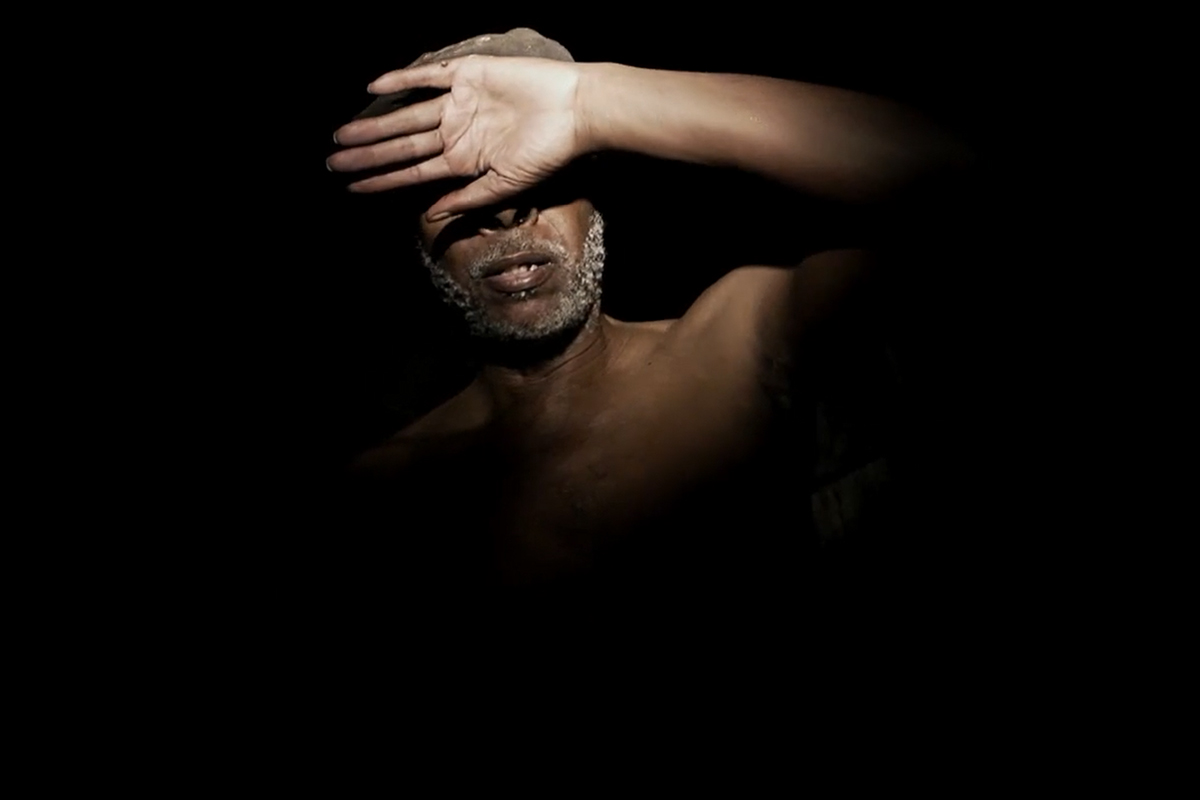
Ventura, manœuvre retraité cap-verdien, erre dans une Lisbonne labyrinthique et cauchemardesque. Il se remémore la manière dont lui et ses amis du quartier Fontainhas ont traversé la Révolution des Œillets, dans la peur de la répression. Dans son errance Ventura rencontre Vitalina qui lui raconte sa propre histoire d’exil.
Après avoir étudié l'histoire à l'université de Lisbonne, Pedro Costa a suivi des cours de cinéma à l'Ecole supérieure de théâtre et de cinéma de Lisbonne (Escola Superior de Teatro e Cinema), où il a été l'élève d'António Reis, de Paulo Rocha et d'Alberto Seixas Santos. Après avoir été l'assistant de plusieurs réalisateurs tels que Jorge Silva Melo, Vítor Gonçalves et João Botelho, il a réalisé son premier long métrage, O Sangue (Le Sang), en 1989.
Peter Bradshaw du Guardian a qualifié Pedro Costa de "Samuel Beckett du cinéma". Il est acclamé pour avoir utilisé son style ascétique pour dépeindre les personnes marginalisées dans des situations de vie désespérées. Nombre de ses films se déroulent dans un quartier de Lisbonne habité par des personnes socialement défavorisées et sont tournés de manière naturelle et discrète dans un format documentaire.
En 1994, Casa de Lava est retenu dans la section « Un certain regard » du Festival de Cannes. Une infirmière y accompagne un maçon cap-verdien plongé dans le coma dans son île d'origine. Ossos remporte en 1997 le prix de la photographie de la mostra de Venise. Il tourne ensuite Où gît votre sourire enfoui, film de la série Cinéma de notre temps, sur le montage d'une deuxième version de Sicilia ! de Straub et Huillet.
Il a reçu le prix France Culture (cinéaste étranger de l'année) au festival de Cannes 2002 pour la réalisation du film In Vanda's Room. Colossal Youth a été sélectionné pour le Festival de Cannes 2006 et a reçu le prix Independent/Experimental (Los Angeles Film Critics Association) en 2008. Son film Vitalina Varela remporte le Léopard d'or au Festival international du film de Locarno 2019.
Séance spéciale
Centre Wallonie Bruxelles | Cinéma
Entrée par le 46, rue Quincampoix - 75004 Paris
Métro: Rambuteau, ligne 11 / Les Halles, ligne 4 / Châtelet, lignes 1, 4, 7, 11 et 14
Entrée libre tout public dans la limite des places disponibles
Accréditation professionnels et badge jeunes : accès gratuit prioritaire dans la limite des places disponibles
"Exposer, exploiter"
Assaf Gruber : Never Come Back - Fiction expérimentale | 0 | couleur | 14:0 | Allemagne, Autriche | 2023
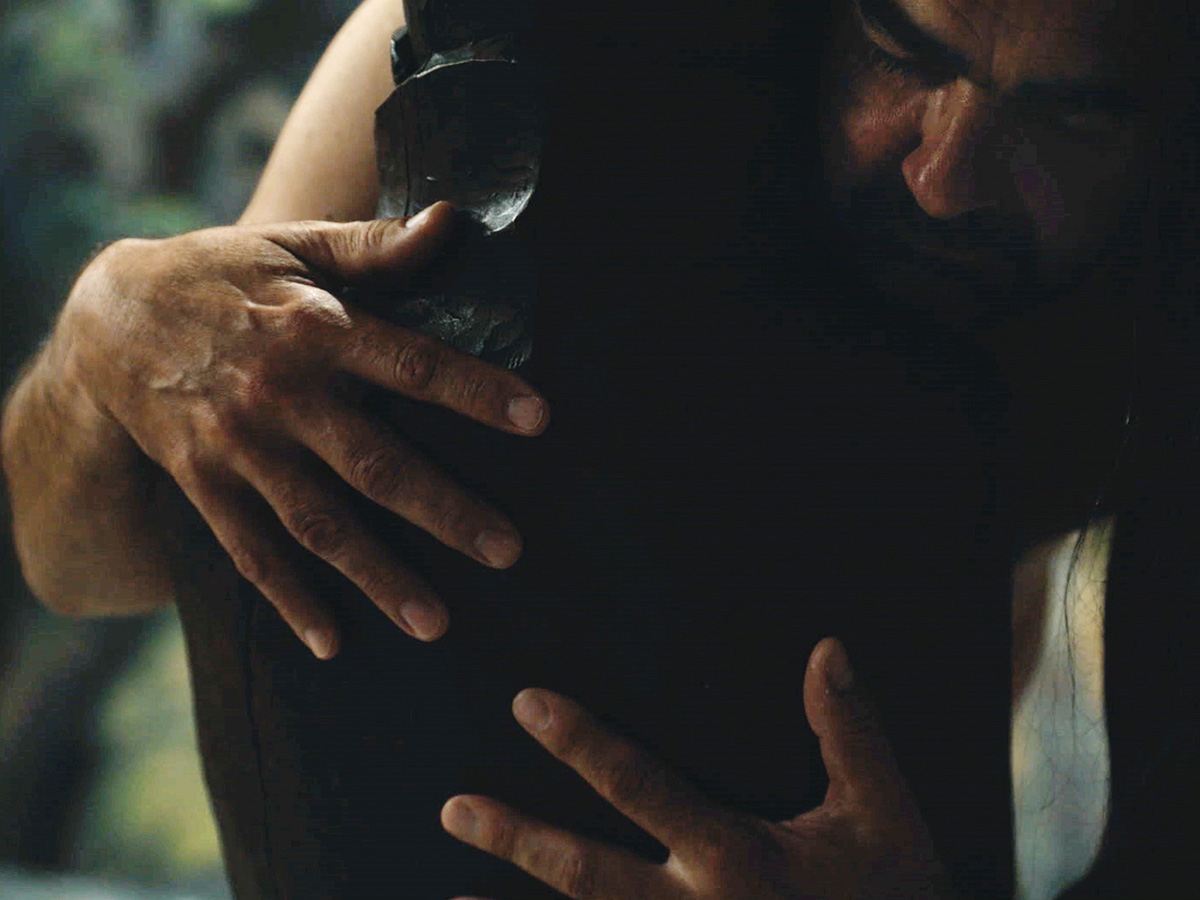
Assaf Gruber
Never Come Back
Fiction expérimentale | 0 | couleur | 14:0 | Allemagne, Autriche | 2023
Museum depots are places where things are kept out of sight, but also protected from all-too-schematic historical judgments. In his new film, Assaf Gruber continues his ongoing investigation of the backstage areas of art institutions to engage with Neue Galerie Graz’s holdings. In the cage-like space of the repository, we see a naked musician working intensely on a composition. He is inspired by artists who belong to a gray area between modernist aspirations and enthusiasm for Nazism, and whose works combine a taste for the exotic with local patriotism, religious fervor, and eroticism. Our mysterious protagonist tentatively plays a familiar melody. It's a song known to many of us, recognisable from dance floors across Europe - but how many of us have ever bothered to listen to its remarkably rascist and imperialistic lyrics?
Assaf Gruber (b. Jerusalem, 1980) is a sculptor and filmmaker living and working in Berlin. The dynamic relationship between individuals and institutions is at the center of his practice, which aims to explore both how the political orientation of legacy establishments impact the lives of individuals and how these organizations choose to represent and communicate facts and their attendant artifacts. Gruber’s solo exhibitions include the Berlinische Galerie, Berlin (2018) and the Muzeum Sztuki, ?ód? (2015). His films have been featured in festivals including the International Film Festival Rotterdam (2023) and FID Marseille (2022). He studied at Cooper Union in New York and is a graduate of the École Nationale Supérieure des Beaux-Arts in Paris and of the Higher Institute of Fine Arts (HISK) in Ghent. Gruber is currently one of the fellows of the Berlin Artistic Research Grant Programme 2022/23 (gkfd).
Jasmina Cibic : The Gift - Fiction expérimentale | 4k | couleur | 27:56 | Slovénie, France | 2021
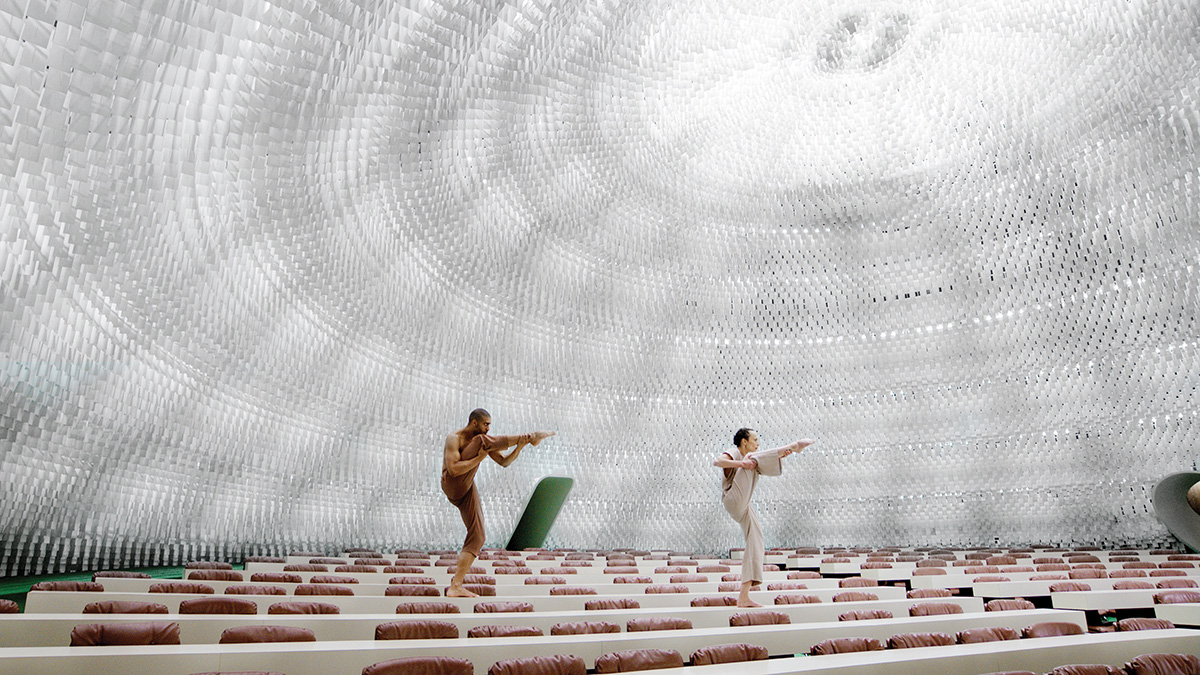
Jasmina Cibic
The Gift
Fiction expérimentale | 4k | couleur | 27:56 | Slovénie, France | 2021
The Gift is a film about the use and abuse of culture in times of political and ideological crisis. It tells the story of a competition for a perfect gift that could heal a broken nation. The Gift is composed entirely of historical ready-mades that include some of the most perturbing examples of art, music and architecture deployed as trojan horses of political powers. The film’s locations include iconic buildings which were all political gifts themselves - including Oscar Niemeyer’s French Communist Party HQ in Paris, the Palace of Nations in Geneva, Mount Buzludzha in Bolgaria and the Palace of Culture and Science in Warsaw.
Jasmina Cibic is a Slovenian artist currently based in London, who works in film, performance and installation. She represented Slovenia at the 55th Venice Biennial with her project “For Our Economy and Culture”. Her recent exhibitions include solo shows at: Museum der Moderne Salzburg, The Highline New York, macLyon, Museum Sztuki ?ód?, Museum of Contemporary Art Ljubljana, CCA Glasgow, Phi Foundation Montreal, BALTIC Centre for Contemporary Art Gateshead, Ludwig Museum Budapest, Kunstmuseen Krefeld along with group exhibitions at MAXXI Rome, Steirischer Herbst ‘19, MOMA NY, Marta Herford and Guangdong Museum of Art China. Cibic’s films have been screened at the Barbican London, Whitechapel Gallery, CCA Montreal, Pula Film Festival, HKW Berlin, Louvre, Les Rencontres Internationales Paris, Aesthetica, Berwick Film and Media Arts Festival, BFI London Film Festival, Dokfest Kassel and Copenhagen International Documentary Festival. Cibic was the winner of the MAC International Ulster Bank and Charlottenborg Fonden awards (2016), the B3 Biennial of the Moving Image Award (2020) and the Film London Jarman Award (2021).
Iván Argote : Levitate - Doc. expérimental | 0 | couleur | 24:0 | France, Italie | 2022
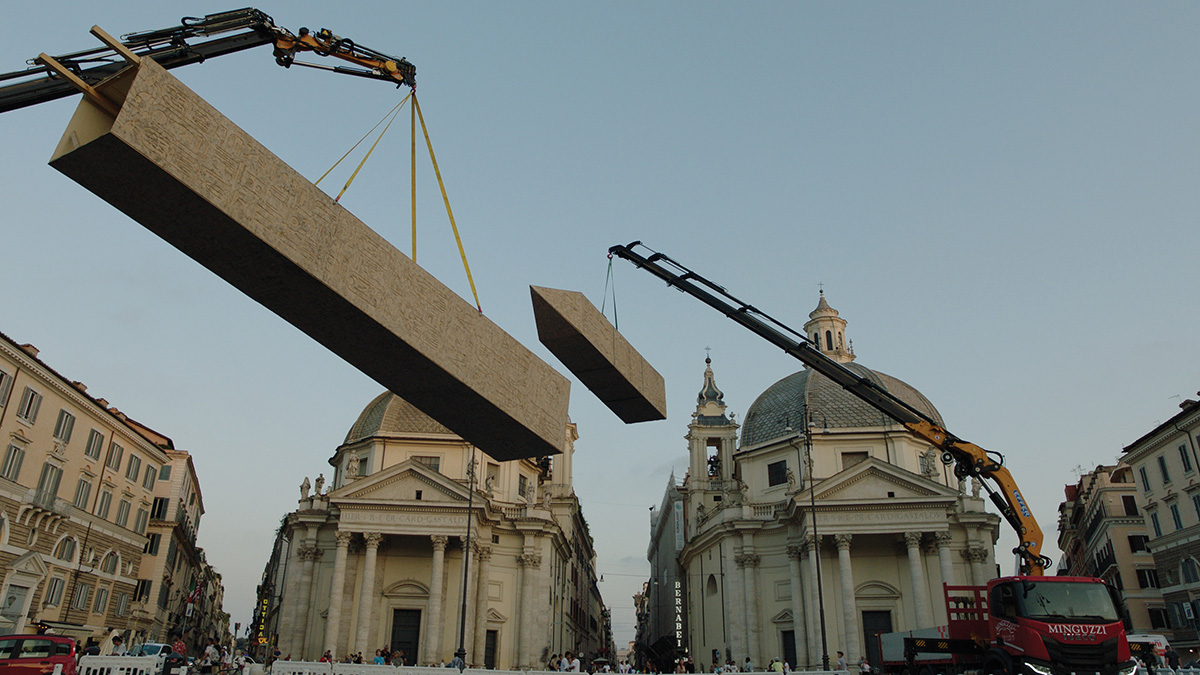
Iván Argote
Levitate
Doc. expérimental | 0 | couleur | 24:0 | France, Italie | 2022
What do monuments want, do, and stand for in our memories and public spaces? Levitate, a new film by Colombian artist Iván Argote, questions the histories, functions and possible futures of colonial icons that still today define the identity of modern European cities. In what the artist calls three anticipatory actions, organized as grand-scale performances in the centers of Rome, Madrid, and Paris, we are confronted with three emblems of control and domination that still exert, undisturbed, their symbolic power from atop their pedestals. The Flaminian obelisk in the Piazza del Popolo, which came to Rome at the behest of Emperor Agustus in 10 B.C.; the statue of Christopher Columbus erected to commemorate the day of the "discovery" of the Americas; and the statue of French military officer and colonial administrator Joseph Gallieni, are suspended, displaced from their position as vertical markers of power and tools for propaganda. Their disruption, albeit ephemeral, immediately opens up a space of public discussion.
Iván Argote is a Colombian artist and film director based in Paris. Through his sculptures, installations, films and interventions, he questions our Relation with others, with power structures and belief systems. He develops strategies based on tenderness, affect and humor through which he generates critical approaches to dominant historical narratives. In his interventions on monuments, large-scale ephemeral and permanent public artworks, Iván Argote proposes new symbolic and political uses of public space. Iván Argote studied graphic design, photography and new media at the Universidad Nacional de Colombia in Bogotá and holds an mfa from the Ecole Nationale Supérieure des Beaux-art (Ensba) in Paris. His work has been the subject of solo exhibitions at Albarrán Bourdais Gallery (Madrid, 2022), Dortmunder Kunstverein (Dortmund, 2021), Perrotin Gallery (New York, 2021 & Paris, 2018), Artpace (San Antonio, TX, 2021), Asu Museum (Phoenix, 2019), Malba (Buenos Aires, 2018), Museo Universitario Del Chopo (Mexico City, 2017), Galeria Vermelho (Sao Paulo, 2017), Palais De Tokyo (Paris, 2013) and Ca2m (Madrid, 2012). Works by the artist are included in the permanent collections of numerous prestigious institutions worldwide, including the Guggenheim Museum (New York, Us); Centre Pompidou (Paris, France); Asu Art Museum (Phoenix, Us); Cisneros Fontanals Art Foundation (Miami, Us); Colección De Arte Del Banco De La República (Bogotá, Colombia); Kadist (San Francisco, Us); Macba (Barcelona, Spain).
Clemens Von Wedemeyer, Paula Ábalos, Emerson Culurgioni, Charlotte Eifler, Deborah Jeromin, Mikhail Tolmachev : Ausbeutung, Oder Wie Man Die Oberfläche Durchbricht - Vidéo | 0 | couleur | 14:30 | Allemagne, Chili | 2021

Clemens Von Wedemeyer, Paula Ábalos, Emerson Culurgioni, Charlotte Eifler, Deborah Jeromin, Mikhail Tolmachev
Ausbeutung, oder wie man die Oberfläche durchbricht
Vidéo | 0 | couleur | 14:30 | Allemagne, Chili | 2021
Ausbeutung oder wie man die Oberfläche durchbricht (Exploitation or How to Break Through the Surface) tells the story of a restorer who studies the history of mining, guided by Hans Hesse's painting on the back of the mountain altar in St Anne's Church in Annaberg-Buchholz. The protagonist sinks deeper and deeper into her research, trying to get behind the surface of the painting and into the present of extraction of new resources.
PAULA ÁBALOS Born in 1989 in Santiago, Paula Ábalos lives and works in Leipzig (Germany). Her work has been presented at the 18th Videonale of the Kunstmuseum Bonn (2021), at the 37th Kasseler Dok Fest (Kassel, 2020), at the City Screen of the LOOP Barcelona festival (2017), at the Kunst-Film-Festival of the GEH8 (Dresden, 2020) and at the Galería Concreta Matucana 100 (Santiago, 2019). In 2020, she received the GOLDEN CUBE award from the 37th Kasseler Dok Fest, as well as the Rundgang 50Hertz award from the Hamburger Bahnhof Museum (Berlin, 2021). In 2021, one of her video works was acquired by the Kulturstiftung collection of Freistaats Sachsen. EMERSON CULURGIONI Born in 1986 in Munich (Germany), Emerson Culurgioni lives and works between Berlin and Leipzig (Germany). Director and visual artist, iI recently completed his second feature film. Trained in photography and classical documentary, he developed a research based mode of filmmaking that includes actors and non-actors. CHARLOTTE EIFLER Born in 1986 in Rostock (Germany), Charlotte Eifler lives and works between Leipzig (Germany), Berlin and Karlsruhe (Germany). Her work is located at the intersection of cinema, sound and technology. In her videos and multimedia installations, she questions the politics of representation, abstraction and computation. With a focus on feminist approaches and elements of science fiction, Charlotte Eifler explores the processes of image production and the imaginaries of alternative futures. She currently teaches image politics and editing practice at the Hochschule für Gestaltung in Karlsruhe. Her work was presented: at the Short Film Festival in Oberhausen (2021), at the International Art Festival in Sapporo (2020), at the Siggraph Congress (Los Angeles, 2020 and 2015), at the Ann Arbor Film Festival (2020), ISCP (New York, 2019), IMPAKT (Utrecht, 2019), Grassi Museum (Leipzig, 2016), Haus der Kulturen der Welt (Berlin, 2015; to come in 2022), at the Museum of Literature in Tblisi (2015), at the Folkwang Museum (Essen, 2014), among others. DEBORAH JEROMIN Born in 1987 in Flensburg (Germany), Deborah Jeromin lives and works between Leipzig (Germany) and Crete (Greece). She develops a research on mainly historical topics and makes them accessible through different media. She focuses on textile handcraft processes, feminist history and sites of National Socialism. MIKHAIL TOLMACHEV Born in 1983 in Moscow, Mikhail Tolmachev lives and works between Leipzig (Germany) and Moscow. After studying photojournalism in Moscow and media arts in Leipzig, he began to develop a research-based practice and became interested in the ever-changing status of a document and the politically mediated production of truth and reality. He collaborates with writers, historians and artists to explore the fractures of representation and to rethink the conventions of spectatorship. His practice encompasses sound installations, videos, photographs and spatial interventions. CLEMENS VON WEDEMEYER Born in 1974 in Göttingen (Germany), Clemens von Wedemeyer lives and works between Berlin and Leipzig (Germany). He has participated at the Chicago Architecture Biennial in 2020, the Cologne Film Festival in 2008, documenta 13 in Kassel (2012), the Berlin Biennale (2006) and the first Moscow Biennale (2005). Monographic exhibitions have also been devoted to him, notably at Haus der Kulturen der Welt, Berlin (2021), at the Auditorium du Louvres, Paris (2019), at MIEFF, Moscow (2019), at Tate Modern, London (2015), at MAXXI, Rome (2013-2014), at MoMA, New York (2007), and at ARGOS Centre for Art and Media, Brussels (2007).

Dans les réserves de la Neue Galerie à Graz, Assaf Gruber filme un musicien nu qui joue une mélodie familière, face à des œuvres qui appartiennent à une zone grise, entre aspirations modernistes et enthousiasme pour le nazisme, combinant un goût pour l'exotisme et un patriotisme local, la ferveur religieuse et l'érotisme. Jasmina Cibic questionne l'utilisation de la culture en période de crise politique et idéologique, et filme, notamment, au siège du PCF à Paris, construit par Oscar Niemeyer, l'histoire d'un concours pour un cadeau parfait, qui pourrait guérir une nation brisée. Elle examine à la fois les idéaux du passé et leur effondrement face à la montée du populisme, et le concept de nation affaibli en tant que catégorie politique, mais réactivé par les populismes de droite. A Rome, Madrid et Paris, Iván Argote réalise trois « actions d'anticipation », performances qui ouvrent un espace de discussion publique. Il interroge ainsi l'histoire, les fonctions et les futurs possibles de monuments, comme autant d’icônes coloniales qui définissent encore aujourd'hui l'identité des villes européennes modernes. Dans le film collectif « L'exploitation ou comment percer la surface », une restauratrice analyse un tableau de la Renaissance. Travaillant sur le sujet de l'exploitation minière, elle va au-delà de la surface du tableau pour arriver à un questionnement sur l'extraction contemporaine des ressources.